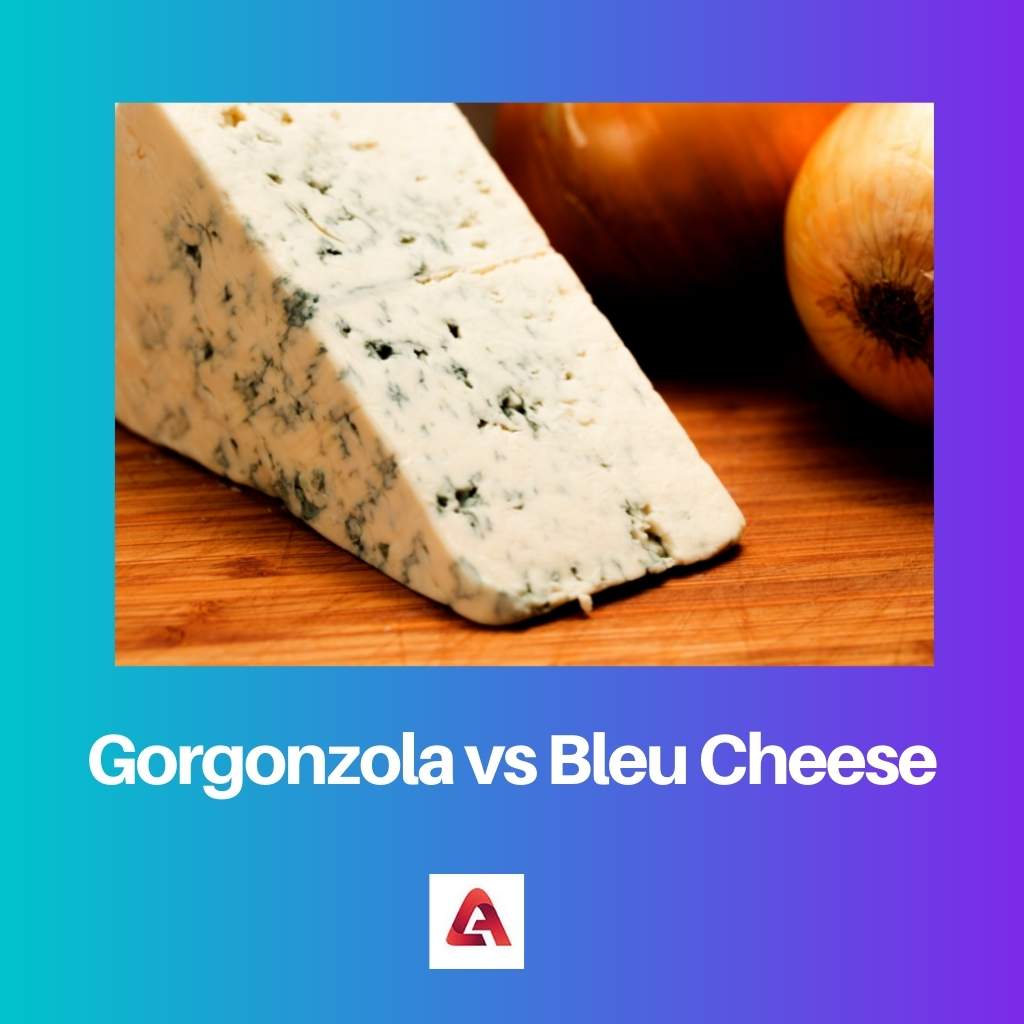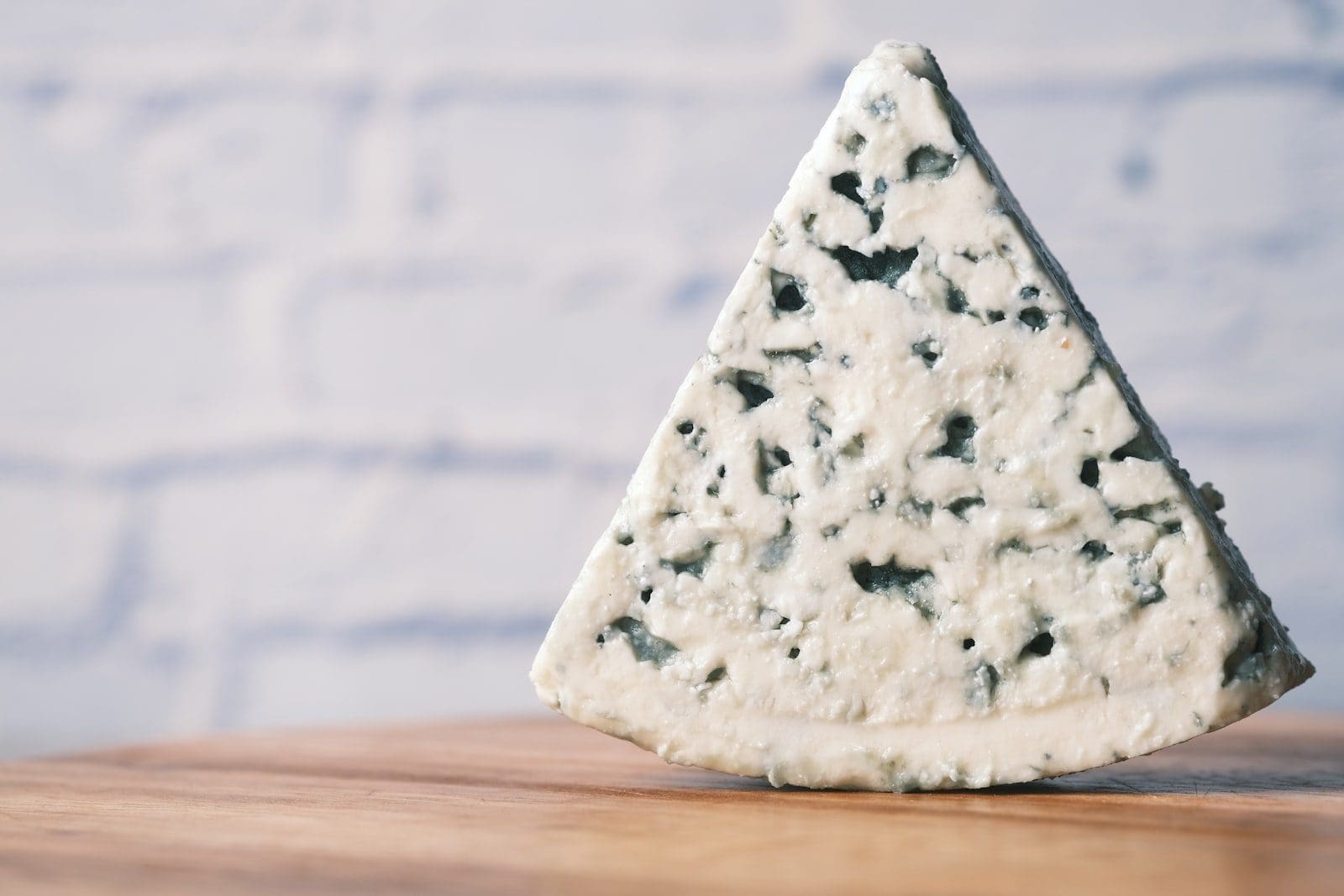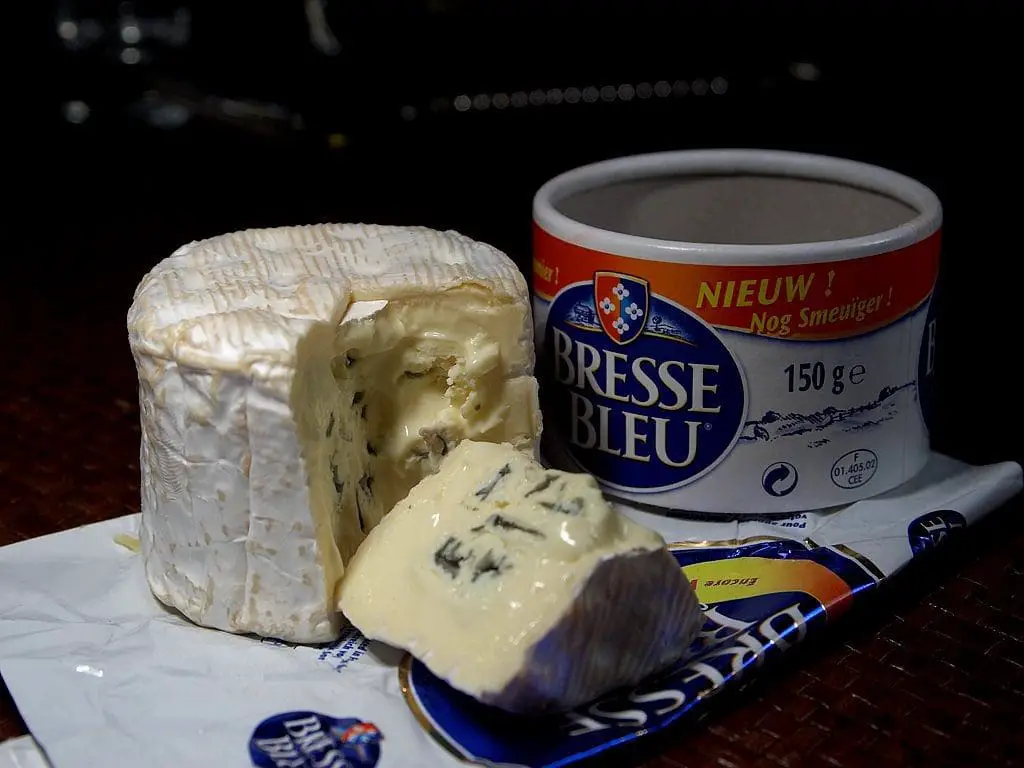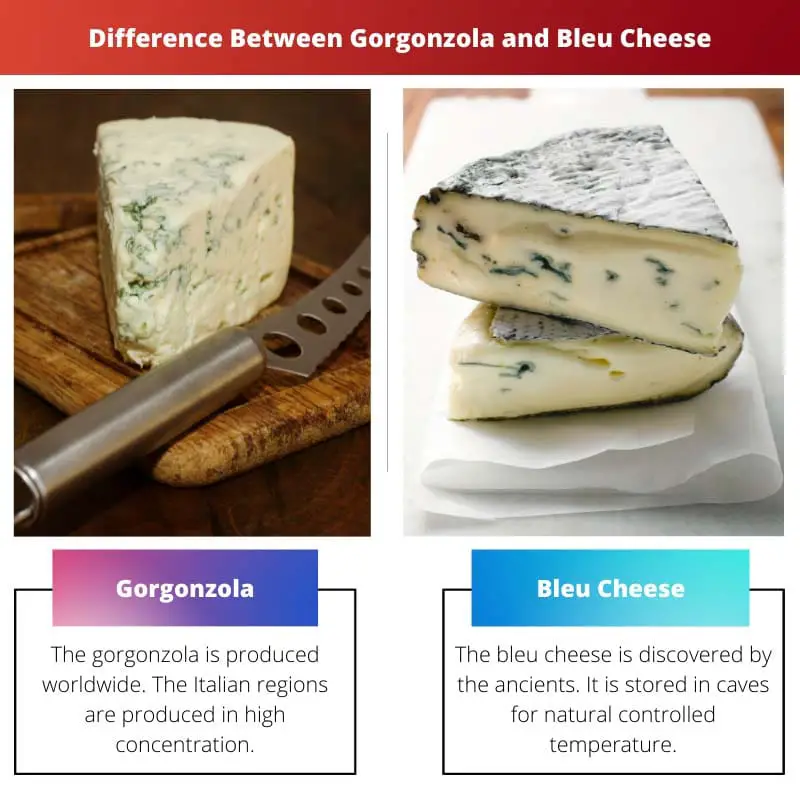Cheese is the favourite ingredient for people of all ages. Cheese has become one of the main ingredients in everyone’s food. People love to add cheese to their daily food.
Many of them don’t know its varieties. The Gorgonzola and bleu cheese are the two different varieties of cheese.
Key Takeaways
- Gorgonzola is an Italian cheese made from cow’s milk, while Bleu cheese is made with penicillium mold.
- Gorgonzola has a milder flavor than Bleu cheese and is creamier in texture.
- Gorgonzola is used in Italian cuisine, while Bleu cheese is used in French cuisine.
Gorgonzola vs Bleu Cheese
Gorgonzola cheese is a veined PDO Italian blue cheese that is made from unskimmed milk from a cow, and it can be buttery, salty, firm or crumbly with a sharp taste. Bleu cheese, also known as blue cheese, is a semi-soft cheese that features a sharp and salty flavour and is made with edible mould Penicillium.

The blue cheese is the other name of gorgonzola. Italy is the place where gorgonzola originated. It has a sour taste with a salty bite from the blue veining. It has 25-35% fat content.
The northern Italian countries like Piedmont and Lombardy are producing a large amount of gorgonzola. Cow milk is used as the chief raw material for manufacturing the gorgonzola. The milk is pasteurized to make the gorgonzola.
The Bleu cheese is manufactured by the cultures of the mold Penicillium. It gives a blue and green color to the cheese. It has a different smell because of bacteria cultivation.
The bleu cheese is injected with spores. The cheese gets aged in a temperature-controlled environment. It gets eaten by itself or starts melting into other foods. The bleu cheese has a sharp and salty taste.
Comparison Table
| Parameters of comparison | Gorgonzola | Bleu Cheese |
|---|---|---|
| Taste | Gorgonzola is Crumbly and salty. | Bleu cheese is Sharp and salty. |
| Carbohydrate | 1 ounce of gorgonzola has 1g of carbohydrate | 1 ounce of bleu cheese has 0.7g of carbohydrate |
| Sodium | 1 ounce of gorgonzola has 375g of sodium | 1 ounce of bleu cheese has 395g of sodium |
| Appearance | Gorgonzola has a green-blue look | Bleu cheese has a blue-grey or blue-green look. |
| Protein | 1 ounce of gorgonzola has 6g of protein | 1 ounce of bleu cheese has 6.06g of protein |
What is Gorgonzola?
The gorgonzola is produced worldwide. The Italian regions are produced in high concentration.
In the ageing process, the metal rods are inserted to remove the air gaps. It allows the mold spores to grow and make the cheese characters. The ageing process for gorgonzola takes three to four months.
The properties of cheese are determined by the time it undergoes ageing. This makes the consistency of the cheese.
The gorgonzola has two varities. That depends on the ageing process of the gorgonzola. The less aged gorgonzola is called Gorgonzola Dolce.
Gorgonzola Naturale, Gorgonzola Montagna, or Mountain Gorgonzola are the name of high aged gorgonzola. The gorgonzola has enjoyed the protected geographical status by the European Union law.
Gorgonzola will be a generic term in legal systems around the world. In Australia, it was ruled that the term “gorgonzola” is generic in nature.
There are multiple ways to eat the gorgonzola. It is added to salads, bread, and other boiled food items. It is used in pizza and burgers by combining with other cheeses.
It is used as a topping or sauce in foods. In the last stage of cooking, the gorgonzola gets melted. It can be served in the melting stage to feel the consistency. The 1 ounce of gorgonzola has 100 calories and 5.3 g of saturated fat.

What is Bleu Cheese?
The bleu cheese is discovered by the ancients. It is stored in caves for natural controlled temperature. They use nature for harmless mold and moisture levels maintenance.
The legend called Roquefort is a young boy when he discovered the cheese. He is eating the bread with milk and cheese and places the meal on the ground when he sees the girl in long.
He saw that fungus changed into cheese when he returned after months.
The bleu cheese has six steps to manufacture. The culturing of the spore rich and fermentation are the two main faces of producing the bleu cheese.
The casein gives the typical structure to the cheese. The hairy layer in milk can not aggregate the casein. The hairy layer has k-casein.
Rennet is an enzyme that separates the κ-casein off the casein micelle, thus eliminating the pressure occurring when the layer snares.
The casein micelles are then able to aggregate collectively when they conflict with each other, producing the curds that can then be molded into blue cheese.
The distinct flavour of bleu cheese comes from lipolysis. The fat breaks the breakdown that gives this distinct taste. The metabolism is further divided into fatty acids from ketones to give a rich aroma.

Main Differences between Gorgonzola and Bleu Cheese
- Gorgonzola is Crumbly and salty, and Bleu cheese is Sharp and salty.
- The 1 ounce of Gorgonzola has 1g of carbohydrate, and the 1 ounce of bleu cheese has 0.7g of carbohydrate.
- The 1 ounce of Gorgonzola has 375g of sodium, and the 1 ounce of bleu cheese has 395g of sodium.
- Gorgonzola has a green-blue look, and Bleu cheese has a blue-grey or blue-green look.
- The 1 ounce of gorgonzola has 6g of protein, and the 1 ounce of bleu cheese has 6.06g of protein.

- https://www.cambridge.org/core/journals/journal-of-dairy-research/article/odourimpact-compounds-of-gorgonzola-cheese/DA75FD56398A931E3A3AFE6DF32191FB
- https://meridian.allenpress.com/jfp/article-abstract/64/2/246/167859

This has shed new light on my understanding of cheese varieties. Who knew there was so much to learn about Gorgonzola and Bleu cheese?
This is quite informative! I appreciate the level of detail the article provides.
I disagree with some points, but it’s an interesting read.
The comparison table is very helpful to understand the differences between Gorgonzola and Bleu cheese. Thanks for sharing!
Agreed, definitely a handy reference.
I think the information provided here is insufficient. There’s much more to explore about these cheeses.
The legend about the discovery of bleu cheese is quite comical. I never would’ve thought!
This post is way too detailed about cheese. I appreciate the effort, but who needs this information?
I never knew this much about Gorgonzola and Bleu cheese. It’s fascinating!
Yes, it’s great to learn about different varieties and their production methods.
It’s quite interesting, indeed.